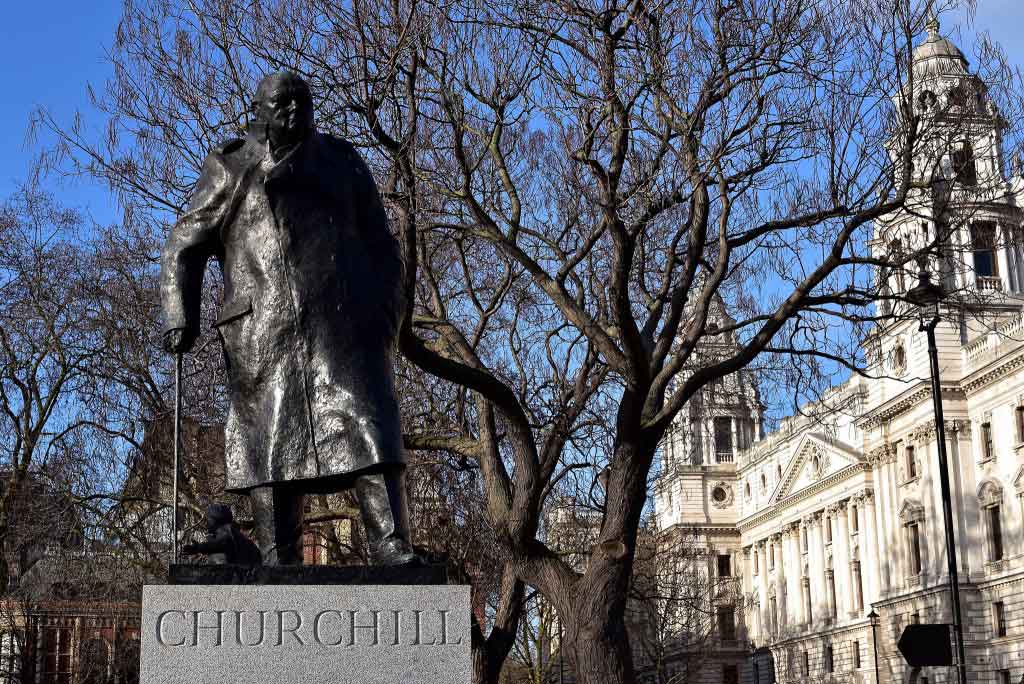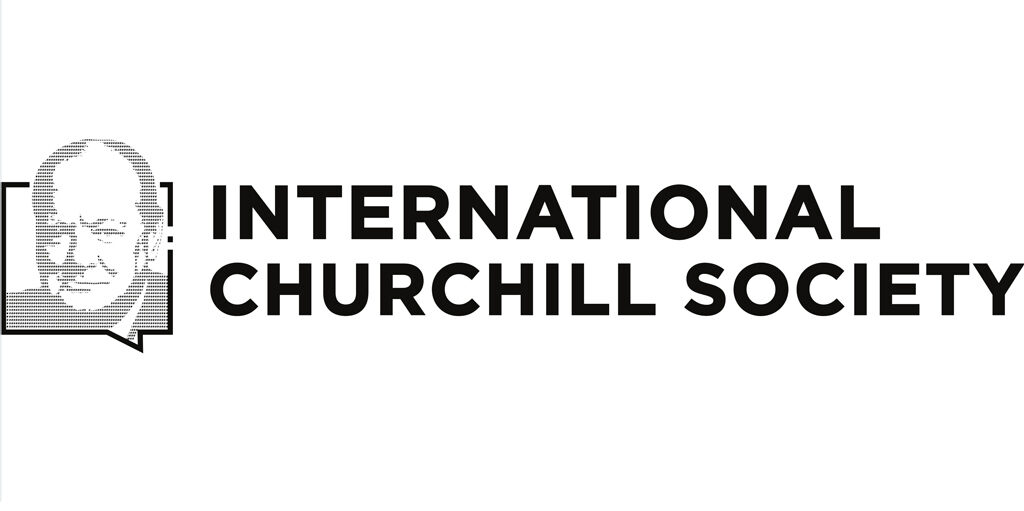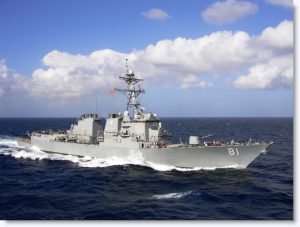
In Memoriam
Five Bells: A Naval History

Winston Churchill, Parliament Square, London © Sue Lowry & Magellan PR
January 14, 2004
Churchill and the Navy
Featured Article – Finest Hour 110
FIVE BELLS: PREDECESSORS
The Churchills: A Naval History
The Winston S. Churchill Has Interesting Forebears
by Neil Coates
The first vessel unequivocally named (with his permission) for Churchill was the cutter Winston Churchill, built by Percy Coverdale at Battery Point, Hobart, and launched in 1942. During World War II the sailboat served as a lighthouse tender off southern Tasmania. She competed in the first Sydney to Hobart Yacht Race in 1945 and in many subsequent races carrying sloop, cutter or yawl rigs, until she foundered with the loss of three lives off the east coast of Australia in 1998. (See Finest Hour 99, p. 47; 100, p. 6; 101, p. 7.)
The first ship named with Winston Churchill “firmly in mind” was HMS Chequers, a “C” Class destroyer. This nomination was made in 1944 by the First Lord of the Admiralty, A. V. Alexander, Chequers being the official residence of the Prime Minister.

2025 International Churchill Conference
Why not HMS Churchill? Alexander had to circumvent a contemporary custom which was to allow a decent interval to elapse between the death of any naval worthy and the naming of a ship after him. This precluded the Prime Minister’s name, as well as “Chartwell,” which would have been too closely identified with him.
The first warship named for WSC was thus the Valiant Class nuclear submarine HMS Churchill, S-104. The vessel was ordered from Vickers Ltd. Shipbuilding Group, Barrow on 21 October 1965, laid down 30 June 1967, launched 20 December 1968, and commissioned 15 July 1970. She was decommissioned in 1991.
The Churchill best known to the British public is the Sail Training Association schooner Sir Winston Churchill, launched 1966 and still in service, instilling an appreciation for traditional sailing among young people.
But the first vessel to carry the Churchill name preceded all of these. She was a destroyer, acquired from the United States in the destroyers-for-bases arrangement in 1940‹and, at least theoretically, she was named not for WSC but for a village in Gloucestershire!
In 1940, one of Churchill’s priorities was obtaining surplus destroyers from Roosevelt to protect British convoys. The loan of 50 U.S. destroyers in exchange for leases on bases in Western Hemisphere British colonies was approved in September 1940. They were obsolete World War I flush deck, four-stack destroyers, once considered a radical departure from their high-forecastle, broken-deck predecessors. In his Flush Decks and Four Pipes, John D. Alden writes that their design gave “added strength amidships while still keeping the customary draft and freeboard forward and aft.” Two hundred seventy-three were built, many going straight to mothballs upon completion. By 1939 Jane’s Fighting Ships listed 153 survivors.
These ships were mostly named for U.S. naval officers, some of whom had been rather too successful in the War of 1812 for their names to be retained by the Royal Navy! According to T.D. Manning’s The British Destroyers, Captain H. Taprell Dorling DSO, a World War I destroyer man (and prolific author under the pseudonym “Taffrail”) “hit upon the idea of renaming them with town names common to both Great Britain (and the Commonwealth) and the USA.” The ships became known as “Town” Class.
Despite the custom of not naming a ship after a living person, lead ships of destroyer flotillas were usually given a distinguished officer’s name. It must have been with no little satisfaction that the Ship Names Committee settled on villages, mostly in England and, that the leader of the first flotilla, commissioned 9 September 1940, was HMS Churchill ‹ostensibly christened for a village south-west of Chipping Norton, Gloucestershire, not far from Blenheim Palace.
HMS Churchill had started life as USS Herndon, DD-198, launched in Newport News, Virginia in 1919, and commissioned in September 1920. She was named for Cdr. William Lewis Herndon (1813-1857) who had commanded USS Iris in the Mexican War, had led an Amazon River exploration trip in 1851-53, and had gone down with his ship in a storm after saving the women and children and many others.
Herndon was placed in reserve in November 1920 and decommissioned in June 1922, but she served in the Coast Guard on the Rum Patrol during 1930-34. One of 63 destroyers activated in September 1939 for the Neutrality Patrol, she was recommissioned and operated in the Caribbean until transfer to the Royal Navy.
These new additions to the British Fleet were celebrated in a Daily Express cartoon on 20 September 1940: a caricature of Churchill and a destroyer with the caption, “Give a ship a good name. The first of the American Destroyer flotilla is named HMS Churchill.”* This clearly endorsed the serendipitous use of “Churchill” by the Ship Names Committee, suggesting that the public knew very well for whom she was named!
Though he had taken an active role in naming battleships before World War I and appointed a committee to investigate destroyer names in 1913, Churchill himself did not, or pretended not to, know the origin of the name. He wrote to Commander G. R. Cousins DSC, the ship’s new commanding officer, on 25 September 1940: “Am delighted that your ship should be named after the great Duke of Marlborough, and I am sending you one of his handwritten letters for your Ward Room for luck.” This misconception continues to the present.**
HMS Churchill served in transatlantic convoys and on patrol duties, including the famous hunt for the German battleship Bismarck. In The Grand Alliance, Churchill records addressing “representatives of the crews of the British and American ships in the anchorage, including the destroyers Hecla and Churchill,” in Iceland following his Argentia Conference with Roosevelt in August 1941.
One night in June 1942, while on convoy duty off Venezuela, HMS Churchill sighted what appeared to be a U-boat on the surface. The destroyer fired starshells and lobbed depth charges. These seemed to make no impression on the U-boat, so Churchill prepared to ram. After a violent last-minute alteration of course, Churchill missed her target by six yards. In the nick of time the “U-boat” had been recognised as the uncharted island of La Sola – a rock 200 feet long and 10 feet high!
HMS Churchill later served as an escort for the pre- and post-invasion buildup for the Allied invasion of North Africa. She changed nationality again in 1944, when on 30 May she was handed over to the Soviet Northern Fleet as part of a compromise with Stalin for Russia’s share of the defeated Italian fleet. Commissioned July 1944 as Dyeyatieny or Deiatelnyi (“Active”), she performed local defence duties before being sunk on 16 January 1945 by a homing torpedo launched by a U-boat, 60 miles east of the Kola Inlet, Northern Russia.
Notes and Recommended Reading
* Sir Martin Gilbert, The Churchill War Papers, vol. II, “Never Surrender” May 1940-December 1940, p. 841.
**Ibid., p. 870 and p. 870, note 2.
See also T. D. Manning, The British Destroyers, 1961; John D. Alden, Flush Decks and Four Pipes, 1965; T. D. Manning and C. F. Walker, British Warship Names, 1959; Who Was Who in America, 1607-1896, 1963; Dictionary of American Naval Fighting Ships, vol. III, 1968; and Philip Goodhart, Fifty Ships That Saved the World: The Foundation of the Anglo-American Alliance, 1965.Mr. Coates ([email protected]) is a member of ICS Australia living in Rose Bay, Tasmania
Mr Coates ([email protected]) is a member of ICS Australia living in Rose Bay, Tasmania
Subscribe
WANT MORE?
Get the Churchill Bulletin delivered to your inbox once a month.




